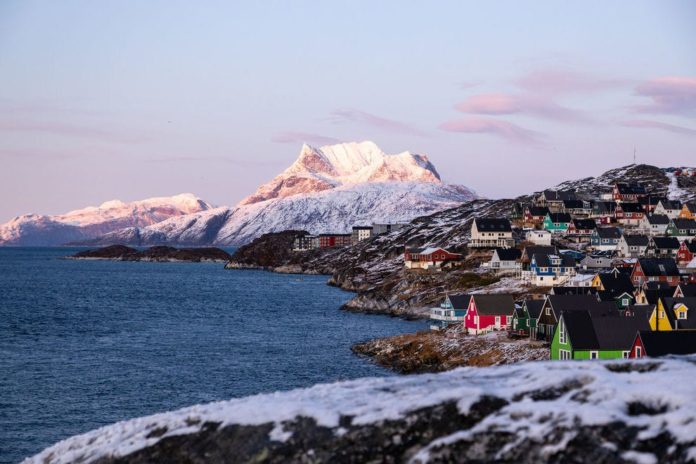Photo courtesy of Aningaaq R Carlsen – Visit Greenland
Welcome to Greenland
Greenland isn’t the easiest place in the world to get to, making it one of the world’s last true travel frontiers. The biggest non-continental island on the planet has the world’s sparsest population – and some of its most jaw-dropping scenery. See for yourself through these photos.
 Photo courtesy of Matthew Littlewood – Visit Greenland
Photo courtesy of Matthew Littlewood – Visit Greenland
Nuuk, Capital of Greenland
Nuuk, Greenland’s capital and largest city, is home to around 18,000 people. While you’re in town, be sure to visit the Greenland National Museum, learn about Greenlandic independence at the parliament building and explore Inuit art at the Nuuk Art Museum.

Greenlandic architecture
One of the first things many visitors notice upon arrival in Greenland is the array of bright colors of the local architecture. When Hans Egede arrived in Greenland in 1721, he brought with him a new colonial style of building using wood from Scandinavia.
Buildings were originally painted based on use – yellow for hospitals, blue for fish factories, red for commercial houses and black for police stations. These days, buildings are still painted in bright colors, but owners don’t always stick to a color coding system.
 Photo courtesy of Paul Zizka – Visit Greenland
Photo courtesy of Paul Zizka – Visit Greenland
Greenland Ice Sheet
More than 99 percent of the freshwater on the planet can be found in the two ice sheets covering Greenland and Antarctica. The Greenland Ice Sheet covers some 79 percent of the surface of Greenland – an area 14 times the size of England. At its thickest point, the ice is 10,500 feet deep.
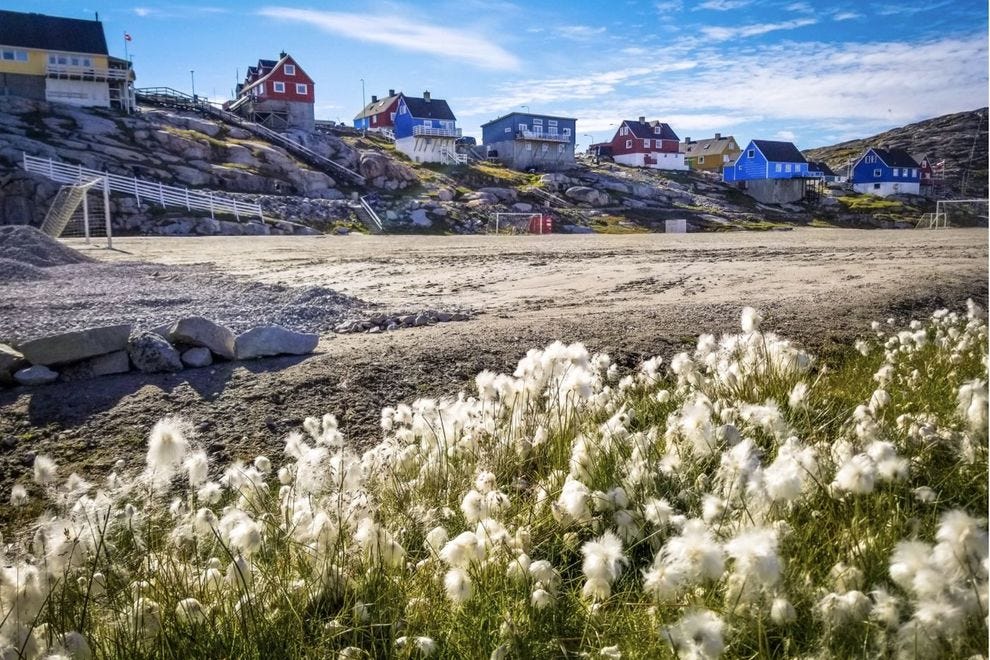 Photo courtesy of Lydia Schrandt
Photo courtesy of Lydia Schrandt
Ilulissat
Ilulissat is the iceberg capital of Greenland and a popular base for exploring the ice sheet. You can often hear the roar of icebergs breaking from the glacial face while strolling through town. A short hike brings visitors to the edge of the Ilulissat Glacier (also known as the Jakobshavn Glacier).
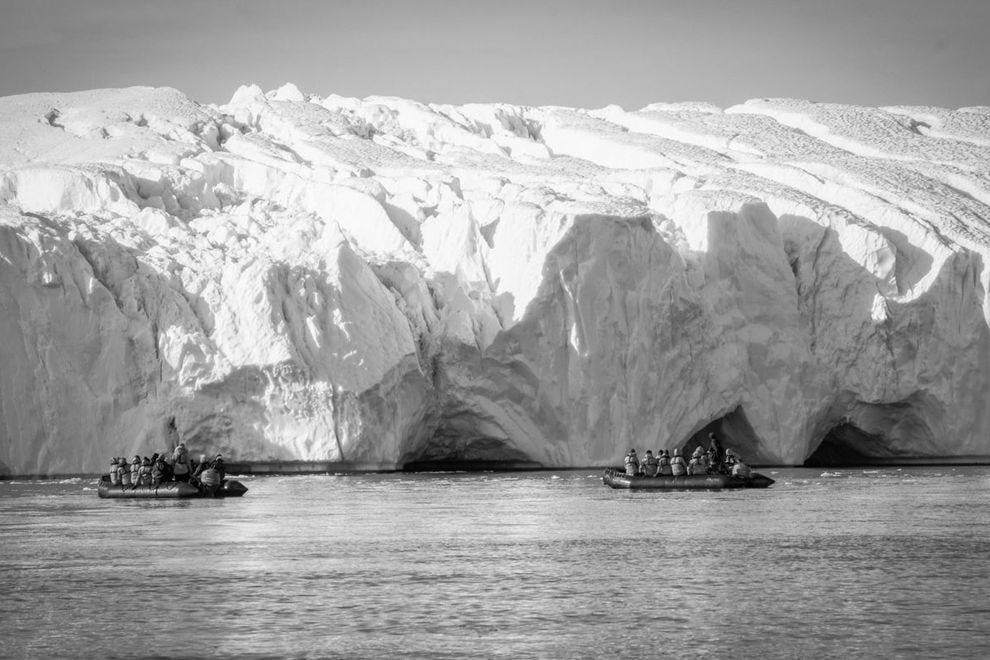 Photo courtesy of Lydia Schrandt
Photo courtesy of Lydia Schrandt
Ilulissat Icefjord
A highlight of a stay in Ilulissat is the chance to get out on the water and explore the UNESCO World Heritage-listed Ilulissat Icefjord. On Greenland’s west coast, the ice cap reaches the sea in what is one of the world’s fastest-moving and most active glaciers. It calves ice more than any other glacier outside Antarctica.

Paamiut
The coast of Greenland is dotted with pretty harbor towns, like Paamiut in the southwest. Visitors to this community can often spot white-tailed eagles soaring above town. In winter, it’s a favorite destination for backcountry snow sports.
 Photo courtesy of Aningaaq R Carlsen – Visit Greenland
Photo courtesy of Aningaaq R Carlsen – Visit Greenland
Leif Eriksson
A millennia ago, Eric the Red and his group of Norsemen sailed into the bay where the modern town of Qassiarsuk is located. Many years later, his son Leif Eriksson would set sail into uncharted waters, reaching the shores of North America almost 500 years before Columbus. A statue of the explorer stands watch over the town of Qassiarsuk in Southern Greenland.
 Photo courtesy of Mads Pihl – Visit Greenland
Photo courtesy of Mads Pihl – Visit Greenland
American history
The town of Narsarsuaq – population 160 – was founded as an American airbase in 1941. During World War II, the United States took over the defense of Greenland from Denmark, establishing two large air bases. Twice, once after the war and again in 2019, the U.S. government offered to buy Greenland. Both offers were rejected by the Danish government.
 Photo courtesy of Mads Pihl – Visit Greenland
Photo courtesy of Mads Pihl – Visit Greenland
A sea of ice
One of the best ways to experience the natural beauty of Greenland is from the water. Excursions along the coast often take visitors through seas of towering icebergs, like the one pictured here.

An agricultural heritage
Inuit and Norse cultures have created a unique farming society at the southern edge of the Greenland Ice Cap. This region, a UNESCO World Heritage site known as Kujataa Greenland, remains an important agricultural region where sheep farms and ice-filled fjords sit side by side.
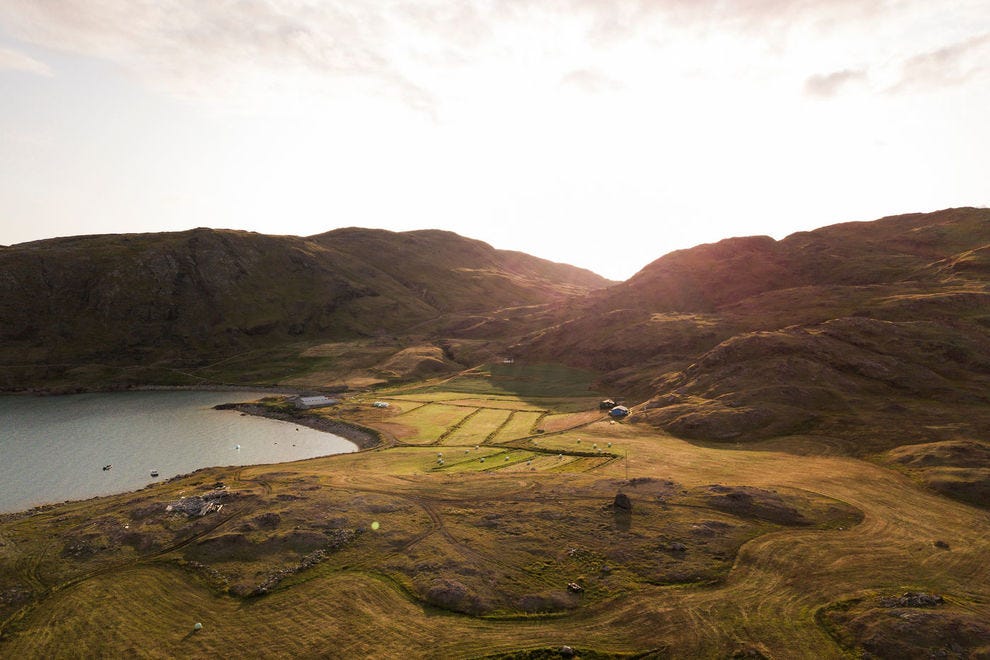
Innerulaalik Sheep Farm
At Innerulaalik Sheep Farm, visitors can experience firsthand what life is like at one of these farms near the Arctic Circle. The property includes two sheep barns, a workshop and a guesthouse. Guests can explore the property on an Icelandic horseback ride.

Hiking in Greenland
Hiking in Greenland often means traversing remote landscapes, even if you’re just outside the capital city. Hiking options here range from relatively easy walks on well-trodden terrain to multi-day treks into the Greenlandic backcountry. Among the most famous treks is the Arctic Circle Trail, which runs for 99 miles between Kangerlussuaq and Sisimiut.
 Photo courtesy of Aningaaq R Carlsen – Visit Greenland
Photo courtesy of Aningaaq R Carlsen – Visit Greenland
Local art
Qaqortoq, the largest town in South Greenland, is known for its art, thanks in large part to the efforts of Greenlandic artist Aka Høegh. In the 1990s, Høegh created an art installation comprising some 40 sculptures around the city. Many of them were carved directly into the rock faces, like this piece depicting migrating whales.

Watersports
When you think of the icy waters of Greenland, watersports might not be the first things that come to mind. But these waters attract enthusiasts from around the globe who come to kayak, stand-up paddleboard and even scuba dive. Since water temperatures vary little throughout the year – they stay just above freezing – it’s possible to dive year-round.
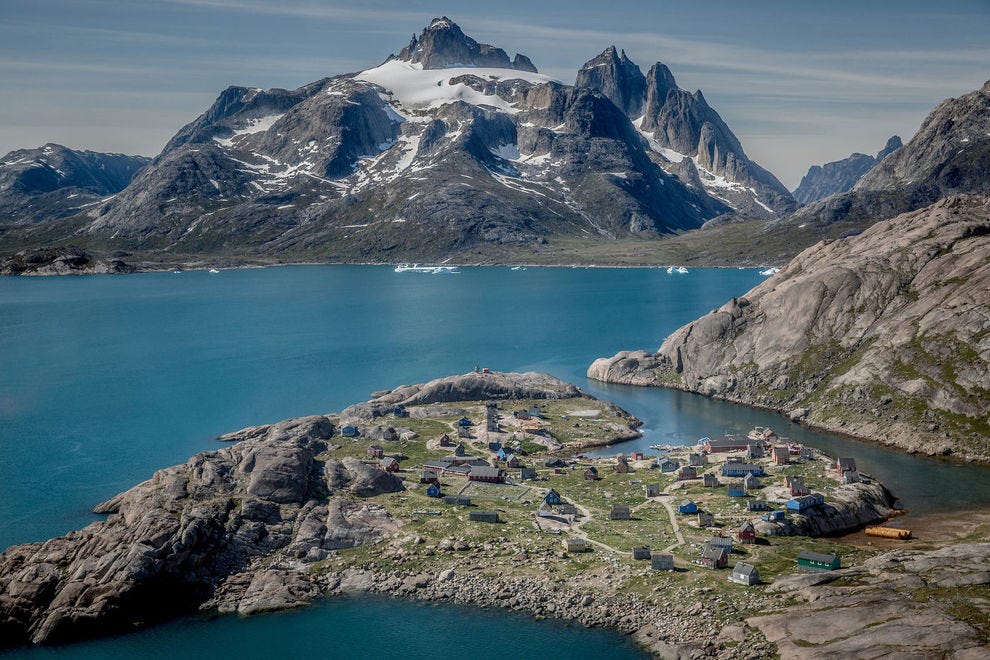 Photo courtesy of Mads Pihl – Visit Greenland
Photo courtesy of Mads Pihl – Visit Greenland
The Southern Fjords
The southernmost fjords in Greenland feature granite spires, rock faces and picturesque villages, like the tiny town of Aappilattoq. The community of around 100 residents sits along Prince Christian Sound, considered among the most stunning fjord systems on earth.
 Photo courtesy of Mads Pihl – Visit Greenland
Photo courtesy of Mads Pihl – Visit Greenland
Arctic Winter Games
Every two years, athletes from around Greenland meet in the capital to compete in the Arctic Winter Games. Traditional Inuit games, known as the Arctic sports, make up a bulk of the competition. Events include high kicking, arm wrestling and head pulling (pictured).
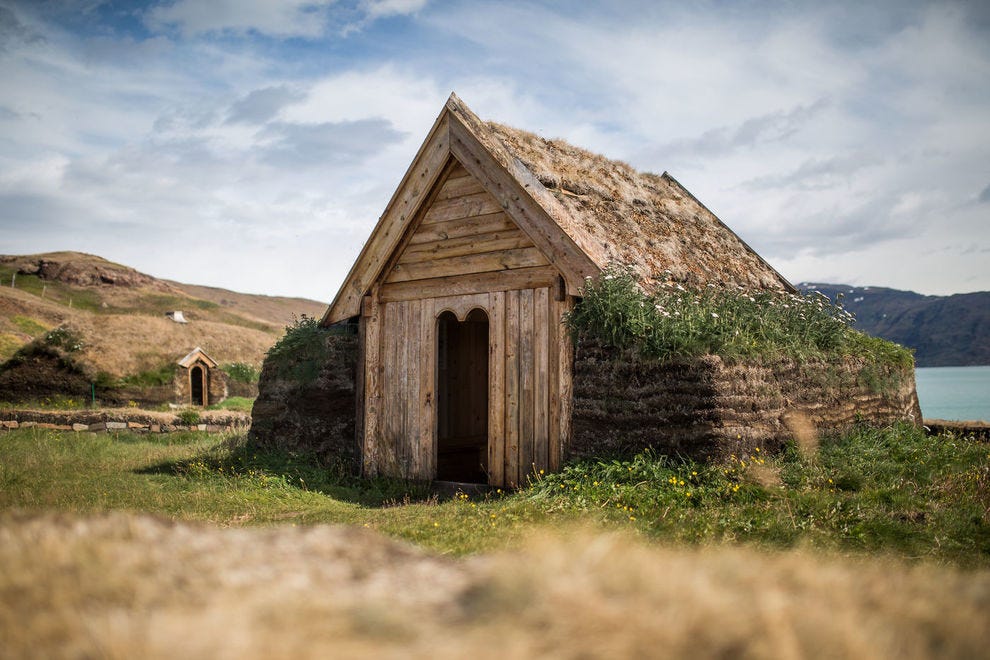 Photo courtesy of Mads Pihl – Visit Greenland
Photo courtesy of Mads Pihl – Visit Greenland
Tjodhilde’s Church
Erik the Red was the first European to step foot in Greenland. His wife Tjodhilde helped establish the first Christian church on the North American continent and eventually converted her then-pagan husband. Visitors can see recreations of Tjodhilde’s Church and Erik the Red’s longhouse, built from turf and timber, near the town of Qassiarsuk.
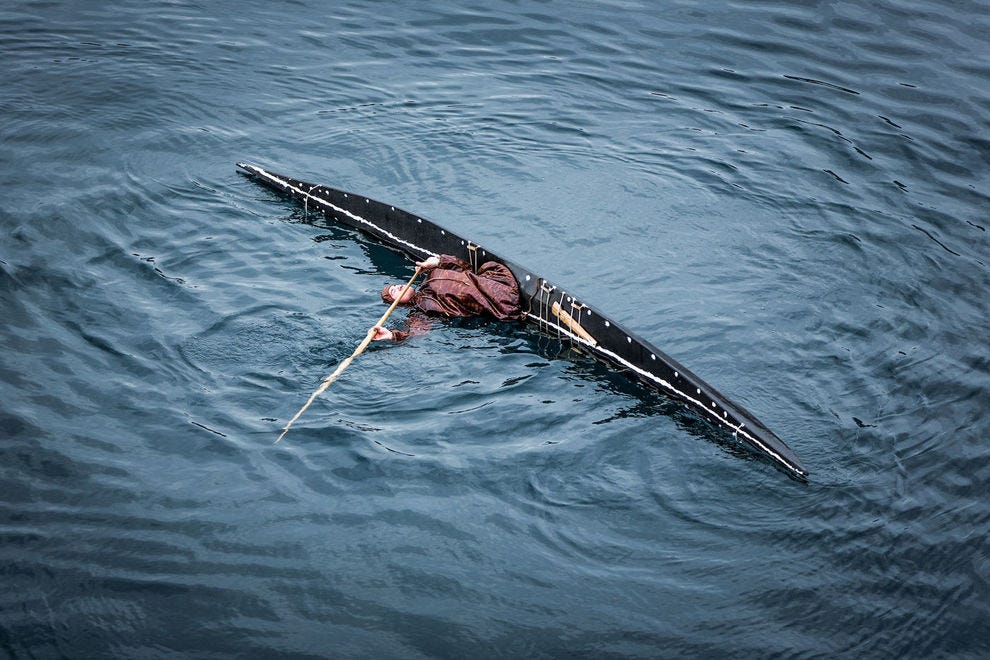 Photo courtesy of Mads Pihl – Visit Greenland
Photo courtesy of Mads Pihl – Visit Greenland
Kayaking
The kayak originated in the Arctic region and was brought to Greenland by the first immigrants some 4,000 years ago. It quickly became an important hunting tool and remains a cultural symbol. Children often learn to kayak at a young age, and experienced kayakers can perform some pretty impressive rolls.
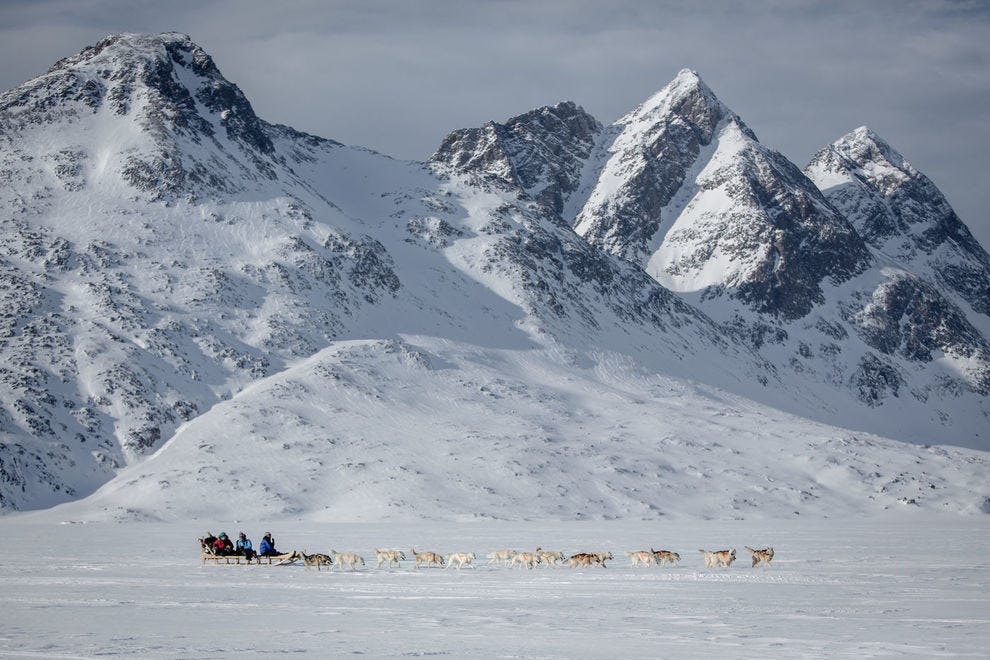 Photo courtesy of Mads Pihl – Visit Greenland
Photo courtesy of Mads Pihl – Visit Greenland
Dog sledding
While kayaks are a popular mode of transportation on the water, on land, it’s the dog sled that has helped Greenlanders traverse the snowy landscape for thousands of years. These days, it’s also a popular leisure activity for both locals and tourists. Greenlandic sled dogs are bred under strict regulations. If a dog is taken out of the area, it’s not permitted to return.
 Photo courtesy of Mads Pihl – Visit Greenland
Photo courtesy of Mads Pihl – Visit Greenland
The Greenlandic Tupilak
The Tupilak, a figure carved from tooth, bone or stone, was originally used as a talisman to protect the owner against attack or enact revenge against an enemy. The term ‘tupilak’ refers to the soul or spirit of an ancestor.
The carved figure, imbued with a spirit, was tossed to sea so that it could hunt down and kill an enemy. If that enemy was stronger in witchcraft, he could always send the tupilak back to kill its creator. These days, sculptors create the figures as works of art.
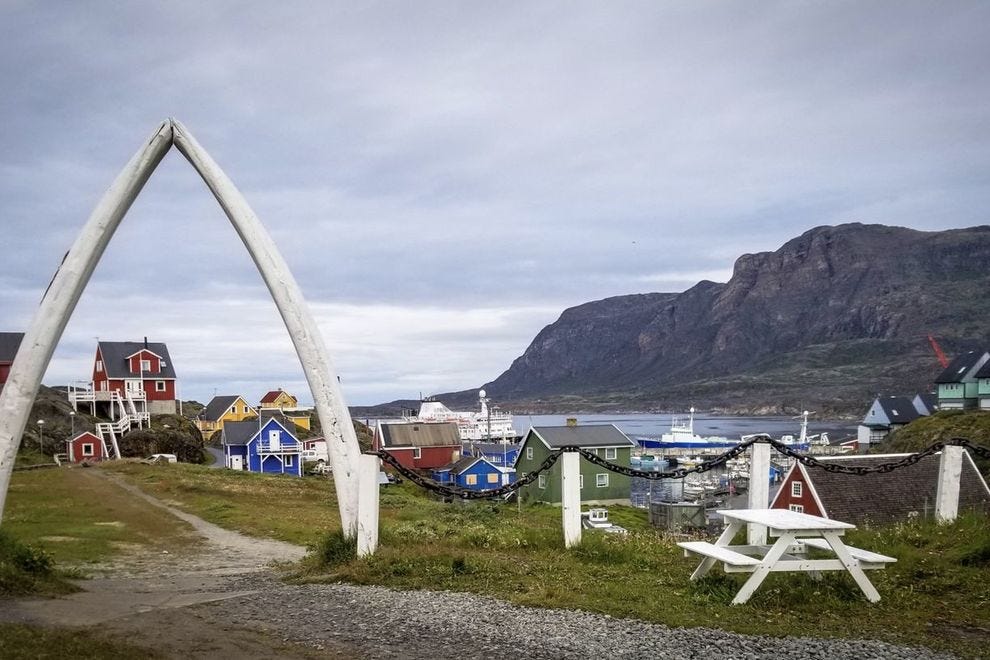 Photo courtesy of Lydia Schrandt
Photo courtesy of Lydia Schrandt
Sisimiut
The town of Sisimiut lies north of the Arctic Circle and is the second largest town in Greenland with 5,600 people. It’s a popular stop for cruise ships plying the western shores of Greenland, and it’s also a base for backcountry adventure, from fly fishing for Arctic char to cross-country skiing.
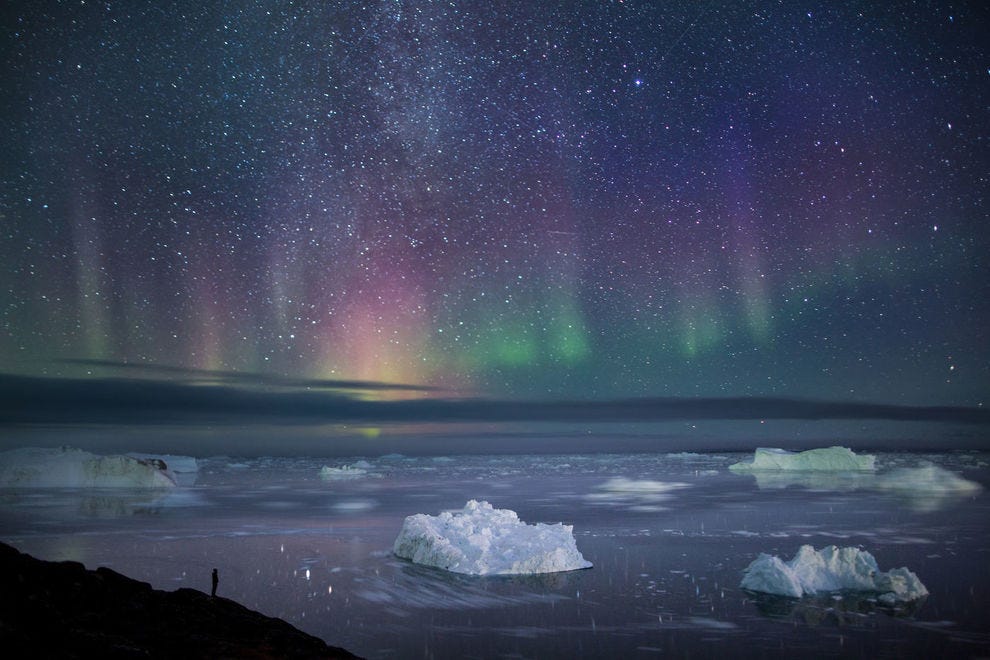 Photo courtesy of Paul Zizka – Visit Greenland
Photo courtesy of Paul Zizka – Visit Greenland
Northern lights
The northern lights are visible in Greenland from September to April. The Space Weather Prediction Center offers forecasts for the lights, updated every 30 minutes. While you can see them in many places throughout Greenland, the community of Kangerlussuaq is the most popular, thanks in large part to its 300 clear nights a year.
 Photo courtesy of Mads Pihl – Visit Greenland
Photo courtesy of Mads Pihl – Visit Greenland
Uunartoq hot springs
For relief from the chill of Arctic air in Greenland, head south to the country’s only heated outdoor spa. From the warming waters of Uunartoq hot springs, you’ll have a view of icebergs and mountain peaks. The heat that warms the spring isn’t actually volcanic but is caused by soil layers rubbing against each other.
Credit: Source link

















